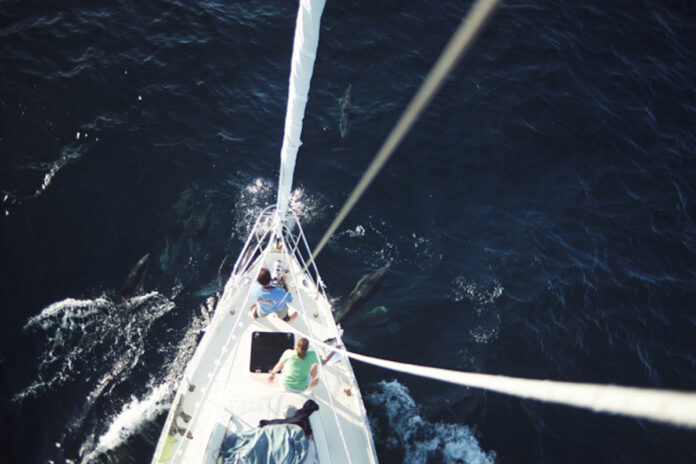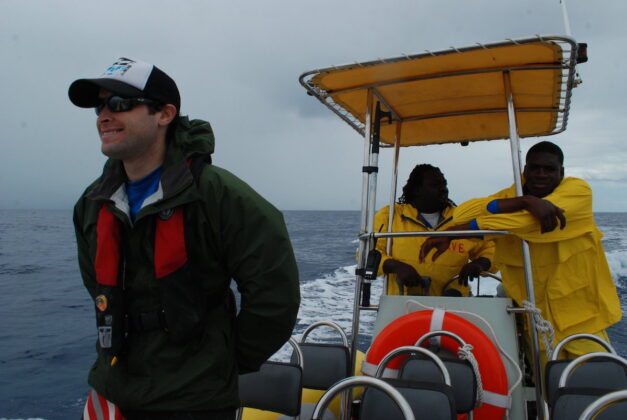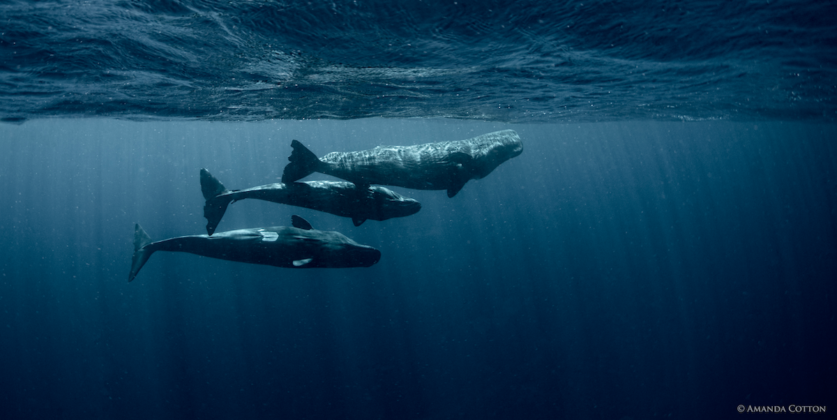
A team of marine biologists and computer scientists from the Massachusetts Institute of Technology have discovered sperm whales use a “phonetic alphabet” to communicate with each other.
The team found 156 distinct codas, or clicks whales produce, similar to how humans produce varying combinations of sounds in different situations.
The study was part of Project Cetacean Translation Initiative (CETI) and was published in the journal Nature Communications on May 7.
Shane Gero, a scientist-in-residence at Carleton, was the team’s sperm whale biologist. Gero has been studying whales for more than 20 years.
The Charlatan sat down with Gero to learn more about the discovery and what it means for our understanding of whales.
The Charlatan (TC): How would you describe the discovery to someone who’s never heard of it?
Shane Gero (SG): When sperm whales speak to each other, they speak in what we call codas, which are rhythmic patterns of clicks. Each of these different rhythms varies in tempo across a whole exchange. Sometimes, they add an extra click at different parts in the conversation.
Having all of these different ways they can vary their communication system means their communication is a lot more expressive than we thought.
TC: Is this discovery teaching us anything new about their social lives?
SG: Whales have the potential to put these clicks together in lots of new ways, so how they use that potential is a big question.
This is really the first step: describing the structure and understanding the system of sounds that they have. Then we can look at when they’re used and why.
TC: Why is it important to understand how animals communicate?
SG: People have been thinking about what animal sounds mean for hundreds of years.
There’s lots of interesting things about why animal communication systems exist and how they evolve, both to understand the evolution of human language — which is undoubtedly distinct and special in its own way — but also that we can learn about how fascinating our neighbours are, and try to understand what that means for us.
They might not be primates like us, but their solution on how to survive on our shared planet is equally as important.
TC: What was the research process like?
SG: What’s exciting about Project CETI is that it brings together all of these different disciplines. There are computer scientists, there are linguists, there are roboticists, engineers, machine learning experts and biologists. That brings this neat group of people together to ask about what animals might be saying to each other.
This project used nearly 15 years of recordings that we’d been making off the coast of Dominica before this exciting team came together.
Pratyusha Sharma was a PhD student at the forefront of this paper who came up with a new data visualization strategy.
We had never really looked at it in that way, and some of the results that ended up coming out in the paper jumped off the screen. Someone who hadn’t spent 30 years studying sperm whales just looked at it in a different way.
TC: What’s next for Project CETI?
SG: Some work that Sharma is working on now is looking at what we can predict from what we’ve already heard.
So if we hear the sounds, can we predict what the whales will do next or what they’ve just done?
One of the examples I like to give to people is that if you’re trying to study Canadian English and you only record a dentist’s office, you’re going to make two mistakes. One is you’re going to think the word “root canal” is critically important to English-speaking society in Canada.
The second thing is you’re going to miss a ton of what actually is important by not recording across contexts and across behaviours.
Linking and predicting around the sounds you hear is the next big step. Once we have that capacity to hear a bunch of codas, predict what sounds are going to come next and predict what the behaviour was, then we can start getting at the function of these calls.
TC: You mentioned an interesting analogy with the dentist’s office. How would you compare the codas of the sperm whales with human language?
SG: Human language is unique in many ways. I think one of the interesting findings in this paper is that there are some structures that are similar.
It would seem that these building blocks of their communication systems can be combined in many different ways — in the same way that letters can be put together in many different ways to make words, and then words put together in many different ways to make sentences.
What Project CETI is doing is getting us out of the dentist’s office problem.
TC: Any concluding thoughts?
SG: Having done this for such a long time now, it’s clear to me that anytime we make a new finding about what is going on in the world of animals, in general, the world is pleasantly surprised to see not only how wonderful and awe-inspiring these animals are, but that there’s these fundamental similarities.
These animals are living rich and complicated lives, and it’s easy to forget that. Their lives go on in parallel to ours.
While it is a step away, understanding the communication of these whales has driven new large-scale conservation work, because these animals are unfortunately living right next to us, and humans haven’t been particularly good neighbours thus far.
I think respecting our neighbours is a big thing that comes from Project CETI and this work in general.
This interview has been edited for length and clarity.
Featured image courtesy of the Dominica Sperm Whale Project.







